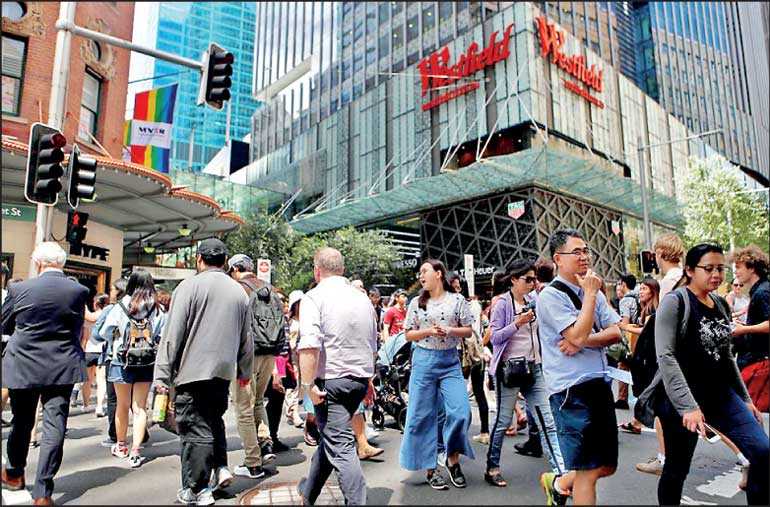Sunday Apr 20, 2025
Sunday Apr 20, 2025
Tuesday, 17 December 2019 00:00 - - {{hitsCtrl.values.hits}}

SYDNEY (Reuters): Australia’s conservative government on Monday cut its outlook for growth in the economy and wages as part of a A$33 billion downgrade to expected revenues over the next four years.
Weak household spending and stagnant wage growth were blamed for the miss, though strong company tax receipts and the falling cost of borrowing provided a timely buffer.
The budget surplus for the fiscal year to June 2020 is now seen at A$5 billion, down from A$7.1 billion previously.
It would still be the first budget surplus in a decade and has been a long-held pledge of the government of Prime Minister Scott Morrison, who won re-election in May partly on the promise.
Morrison has cited the need to achieve a surplus to rebuff calls for a package of fiscal stimulus measures to help revive economic growth, which ran at a disappointing 1.7% in the year to September.
That reluctance has put the onus on the Reserve Bank of Australia (RBA) to stimulate the economy with three cuts in interest rates since June taking them to a record low of 0.75%.
The lack of government action is a major reason markets are pricing in at least more rate cut to 0.5%, and even the chance of unconventional policy such as the RBA buying government bonds.
In his mid-year fiscal outlook, Treasurer Josh Frydenberg projected a surplus of A$6.1 billion for 2020/21, down from A$11 billion previously, while the surplus for 2021/22 was more than halved to A$8.5 billion.
In all, the cumulative surplus out to 2023 was now seen at A$23.5 billion, a drop of more than A$21 billion from the previous projection.
The forecast for gross domestic product (GDP) growth was cut to 2.25% for 2019/20, from an initial 2.75%, though 2020/21 was kept at 2.75%.
There was a steep downgrade to the outlook for wage growth, which has consistently disappointed for several years now. Wages were seen rising just 2.25% this year, down from a projected 2.75%, while 2020/21 was slashed to 2.5% from the government’s original 3.25% call.
Unemployment was now seen at 5.25% this year and next, up from 5% previously.
One saving grace has been prices for iron ore, the country’s biggest export earner, have topped all expectations thanks to supply disruptions in Brazil and resilient demand in China.
The ore is currently trading around $90 a tonne, when the government had forecast an average of $55 for 2019/20.
Frydenberg chose not to lift that forecast, likely hoping it would allow the government to “overachieve” with a bigger surplus in the next full budget in May.
Discover Kapruka, the leading online shopping platform in Sri Lanka, where you can conveniently send Gifts and Flowers to your loved ones for any event including Valentine ’s Day. Explore a wide range of popular Shopping Categories on Kapruka, including Toys, Groceries, Electronics, Birthday Cakes, Fruits, Chocolates, Flower Bouquets, Clothing, Watches, Lingerie, Gift Sets and Jewellery. Also if you’re interested in selling with Kapruka, Partner Central by Kapruka is the best solution to start with. Moreover, through Kapruka Global Shop, you can also enjoy the convenience of purchasing products from renowned platforms like Amazon and eBay and have them delivered to Sri Lanka.
Discover Kapruka, the leading online shopping platform in Sri Lanka, where you can conveniently send Gifts and Flowers to your loved ones for any event including Valentine ’s Day. Explore a wide range of popular Shopping Categories on Kapruka, including Toys, Groceries, Electronics, Birthday Cakes, Fruits, Chocolates, Flower Bouquets, Clothing, Watches, Lingerie, Gift Sets and Jewellery. Also if you’re interested in selling with Kapruka, Partner Central by Kapruka is the best solution to start with. Moreover, through Kapruka Global Shop, you can also enjoy the convenience of purchasing products from renowned platforms like Amazon and eBay and have them delivered to Sri Lanka.